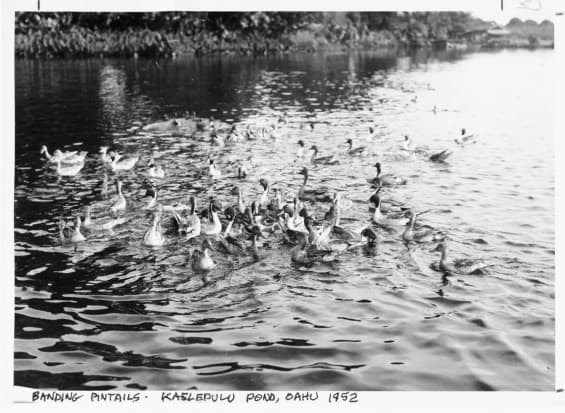Northern Pintail Duck
Anas acuta

These large, strikingly beautiful ducks visit the Kaelepulu wetland almost annually. They are quite shy and usually stay in the lake or near the lake edge of the wetland. It is rare to see more than two or three of them during the winter migratory months. As recently as the 1950s, they were quite common in Kaelepulu Pond, as seen in the black and white photo.
Northern pintails are among the first ducks to migrate south in the fall and north in the spring. Over half of the pintail population in North America migrates through California. The majority of these birds winter in the Central Valley of California, but some continue south to the west coast of Mexico. Pintails using the Central Flyway winter in the Texas Panhandle and on the Gulf Coast of Texas and western Louisiana. The majority of pintails using the Mississippi Flyway winter in Louisiana, with smaller numbers wintering in Arkansas, Tennessee, Mississippi, and Alabama. Along coastal wintering grounds, pintails concentrate on shallow fresh or brackish estuaries adjacent to agricultural areas. Northern pintails are common winter visitors to Central America, the Caribbean, and northern Colombia.
Pintails were once one of the most abundant ducks in North America but have suffered a disturbing decline since the 1950s. In 2009, the breeding population was estimated at 3.2 million birds, substantially below the North American Waterfowl Management Plan objective of 5.5 million. More than any other North American waterfowl species, the northern pintail population has suffered from persistent drought and loss of grassland habitat.

